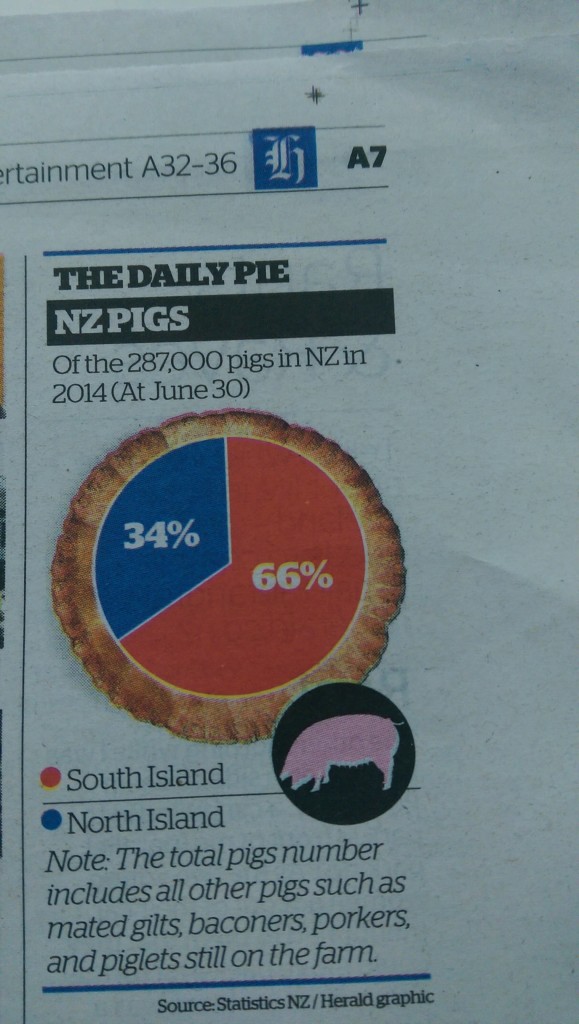Graph legends: ordering and context
I’m not going to make a regular habit of criticising the Herald’s Daily Pie — for a start, it only appears in the print version, which I don’t see. Today’s one, though, illustrates a couple of issues in graph legends
The first issue is ordering. That’s almost trivial with just two values, but I actually found it distracting to have “South Island” at the top of the legend, especially when the corresponding red wedge is higher on the page than the blue wedge. I had to look twice to work out which wedge was which. Reordering with “North Island” at the top would have helped, as would putting the labels on the pie (instead of the numbers).
Second, there’s the Note:
The total pigs number includes all other pigs such as mated gilts, baconers, porkers, and piglets still on the farm.
which comes directly from the StatsNZ table (of data from the Agricultural Production Survey). I know that, because these tables are the only place Google can find even the sub-phrase “such as mated gilts”. In the context of the table, the note says that the “at June 30” columns for total pigs include the “Breeding sows (1-year-old and over)” given in earlier columns of the table, plus other categories that someone interested in the data would probably be familiar with. Without the earlier columns, the reaction should be “other than what?”.
Looking at the StatsNZ table you also learn the reason why “At June 30” in the title is important. The total “includes piglets still on the farm”, but not the much larger number of ex-piglets that have become part of the pork products industry: there were over 600,000 piglets weaned on NZ farms during the year, but only 287,000 pigs still on farms as of June 30.
Thomas Lumley (@tslumley) is Professor of Biostatistics at the University of Auckland. His research interests include semiparametric models, survey sampling, statistical computing, foundations of statistics, and whatever methodological problems his medical collaborators come up with. He also blogs at Biased and Inefficient See all posts by Thomas Lumley »
